HeroForge has launched a Kickstarter campaign for its new custom dice, and die rollers across the world are very excited. The ability to pop your custom character into a 20-sided resin prison will take your D&D campaigns to the next level. At the time of writing, the campaign is already 300 percent funded just a few days after launching, so players will be customising their dice before they know it.
You can check out the Kickstarter here, but HeroForge sent us some test dice to check out, and first impressions are good. We received four d20s – two regular sized and two extra large – and a d4. Two of the d20s (one regular and one jumbo) contain a dragon head, with the ‘20’ panel left empty so you can stare right into his fiery eye.
The Dice Themselves
The other jumbo d20 contains a grey tabby cat playing with a ball of yarn. I’m not particularly a cat guy (cue hateful comments) but I have to admit it’s pretty cute. Finally, there’s a small d20 containing a bust of some kind of ranger character, while the sole d4 has a little mushroom guy trapped inside. All the characters look clean and well-printed; the clear resin surrounding them pristine.
However, the numbers aren’t particularly easy to read, particularly on the cat die. This jumbo d20 uses a tiny, grey font, and I found it very difficult to parse, especially against the grey cat itself. Granted, I was rolling the die over 300 times in a row rather than making one skill check in a game of D&D, but the bigger numbers on the dragon die, as well as the black colour, made it much easier.
I would prefer if these numbers were embossed, as they look a little cheap, like they’ve been printed on as an afterthought. However, I understand that this would increase the costs and therefore price. Considering HeroForge is known for the massive amount of customisation it offers on its figures, it would have been nice to have the option, though, for those of us who are into dice, rather than just using them as tools.
However, I couldn’t help but wonder whether these dice roll true.
How To Test Weighted Dice
Looking at the dice, I had my suspicions that they might not be perfectly balanced. It’s worth noting that the Kickstarter itself explains that HeroForge has performed its own tests, including a float test and 1,000 roll average test, but I wanted to see for myself.
The float test involves, as you’d suspect, floating the dice in salt water to see if any specific face rises to the top.
The dragon dice intrigued me the most, as the design is heavily ‘weighted’ to one side, where the shoulders of the bust are. If the character resin was truly heavier, I would expect to see a lot of 2s, 12s, 18s, and 20s, which are on the opposite side. Similarly, I wouldn’t expect to see many 19s, 9s, 3s, or 1s.
I rolled the extra large dragon d20 250 times, the regular-sized dragon d20 250 times, and the jumbo cat d20 (which seems more balanced in terms of where the animal sits within the die) 250 times. As a control, I also rolled a random d20 from my personal collection 250 times. This die was from 1985 Games’ lovely retro set, which I regularly use for my D&D sessions.
If the 1985 Games die turns out to be weighted, my DM is going to be so mad.
The reasons for this spread were simple. I wanted to see if each die was, individually, weighted in any way. 250 rolls is not a flawless sample size, but it’s good enough. Having two of the same design would also give me 500 rolls to determine whether they would act similarly due to that fact.
That’s 1,000 dice rolls meticulously scored by hand. I’m not exaggerating when I say this took me hours to test, but I’m nothing if not committed to the pursuit of science, fairness, and quality dice. I can also hear the sound of rolling dice when I sleep now. Help.
The Results
After rolling somewhere in the realm of what an average Ork player rolls per shooting phase, just one at a time, I came to a few quick conclusions. Firstly, my wrist hurts. Secondly, these dice seem fairly balanced.
Take a look at the graph above. This shows the results of all 1,000 rolls, separated by the die rolled and sorted by the result rolled. There’s no clear pattern or correlation. Even the control die varied wildly, suggesting that perhaps 1,000 rolls wasn’t a big enough sample size to truly know if a die is weighted or not.
However, there were a couple of conclusions we could draw from adding all three HeroForge dice together. As you can see below, all three dice spiked on 12 and 19, and the least rolled result was, by far, a 9. Now, 12 and 9 are direct opposites on a 20-sided die (each set of opposite faces always adds up to 21), so this may suggest that there is weighting on the 9. The 9 on the Dragon die also sits near that shoulder joint I was watching out for, that I suspected could be heavier.
That being said, 19 is right on the ‘bottom’ of the die, next to 9. That result probably shouldn’t have appeared so many times if it really was weighted. It’s also worth taking into account the frequency on each die. The jumbo dragon die rolled a 12 on 14 occasions, with the small dragon and cat rolling it 19 times each. The cat, which I might guess the lightest side would be the 10, rolled that result just eight times.
I’m working on an assumption that the coloured resin is potentially heavier than the clear resin.
There’s also the fact that these results aren’t reversible. If the coloured resin was lighter than the clear resin and a 19 on the dragon die really was lighter than its opposite, we wouldn’t see many 2s. However, across the three HeroForge dice, a 2 was rolled 34 times, marginally below average for 750 rolls. On the dragon dice alone, a 2 was rolled 21 times, just four below the expected average. With a relatively small sample size, that doesn’t seem like unreasonable variance.
|
Roll |
Large Dragon |
Little Dragon |
Large Cat |
Control |
|
1 |
11 |
13 |
12 |
9 |
|
2 |
11 |
10 |
13 |
17 |
|
3 |
12 |
13 |
16 |
11 |
|
4 |
14 |
11 |
13 |
12 |
|
5 |
16 |
11 |
13 |
9 |
|
6 |
11 |
10 |
14 |
11 |
|
7 |
11 |
17 |
16 |
11 |
|
8 |
8 |
14 |
10 |
11 |
|
9 |
5 |
9 |
11 |
12 |
|
10 |
18 |
12 |
8 |
9 |
|
11 |
11 |
8 |
9 |
17 |
|
12 |
14 |
19 |
19 |
10 |
|
13 |
11 |
13 |
10 |
13 |
|
14 |
19 |
16 |
9 |
17 |
|
15 |
11 |
9 |
10 |
13 |
|
16 |
11 |
8 |
12 |
10 |
|
17 |
13 |
10 |
17 |
16 |
|
18 |
7 |
14 |
10 |
10 |
|
19 |
20 |
18 |
16 |
16 |
|
20 |
16 |
15 |
12 |
16 |
You can check out the full results in this table and draw your own conclusions, but I’ve made my mind up. This test was inconclusive due to the small sample size, but if anyone else wants to add their results to mine, we can easily increase that. In the meantime, these dice don’t seem to be weighted in any meaningful way. Maybe your local casino wouldn’t let you bring them in (it’s probably policy that players can’t use a d20 in craps anyway, let alone their own d20), but for roleplaying or tabletop games, they seem fine.
The extra large dice comfortably look the coolest, with so much detail visible on the models encased within, but they’re cumbersome to roll. They’re not particularly satisfying and land with a clunk rather than a clatter. You can only fit a tiny little dude in a D4, so make it count. A bust in a regular-sized D20 is a happy medium, and I can see players customising dice for each weapon their character has and the like to great effect. Just don’t go picking a character with a voluminous beard so that you can try to weight your custom die to give you constant nat 20s. Trust me, it won’t work.

Next
Heroforge’s Kitbashing Is As Brilliant As Your Imagination
HeroForge steps up its virtual miniature making with Kitbashed, a great tool in the right hands

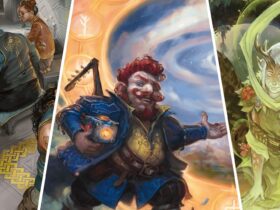









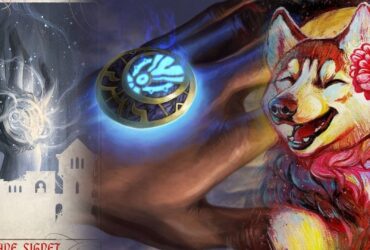

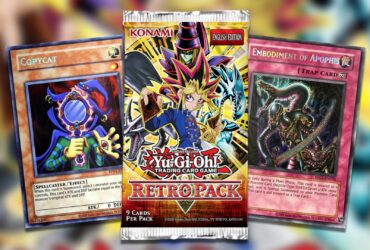

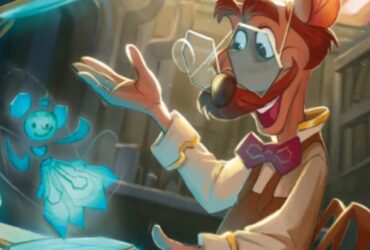
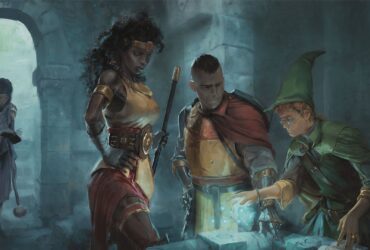
Leave a Reply